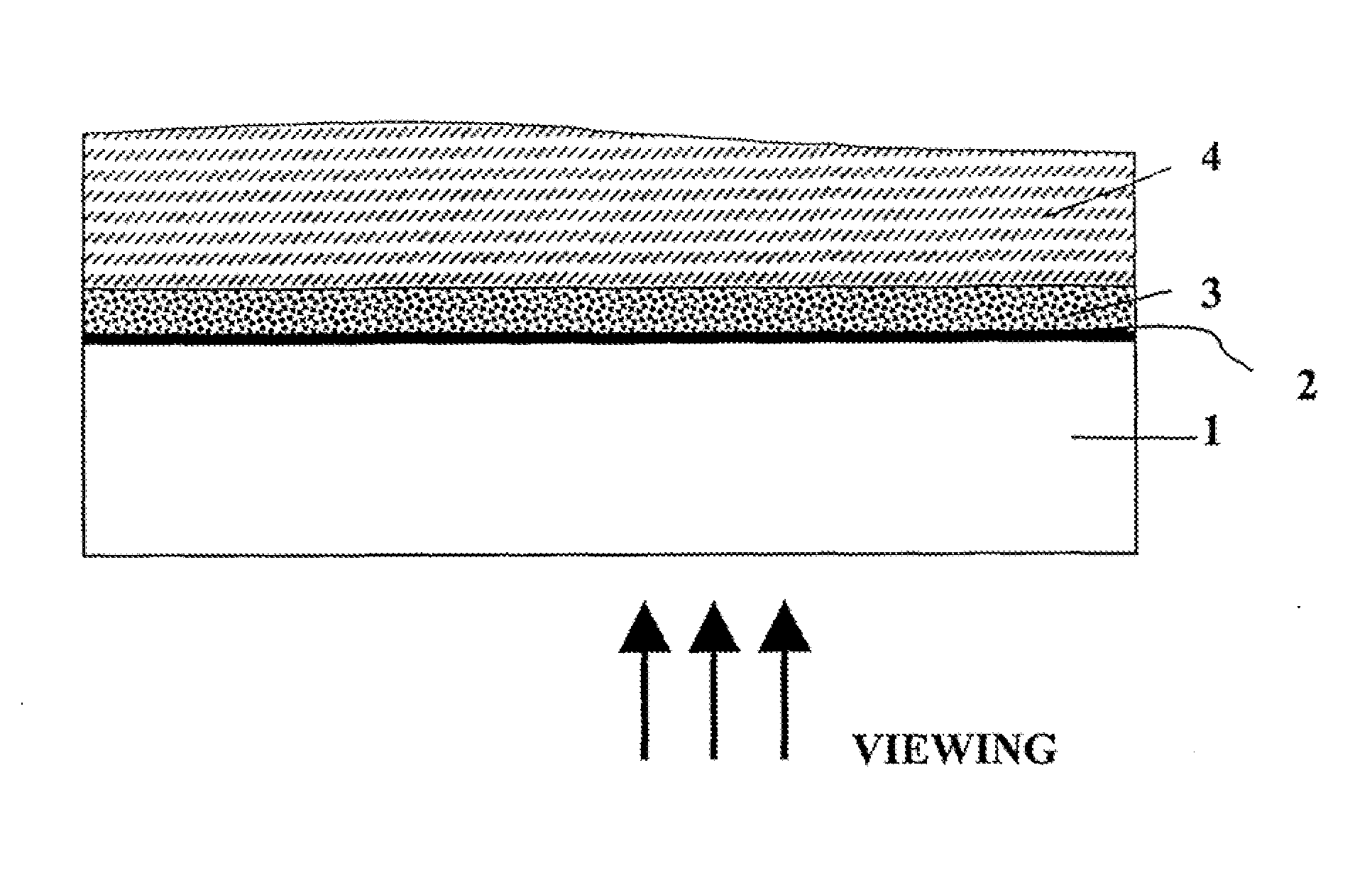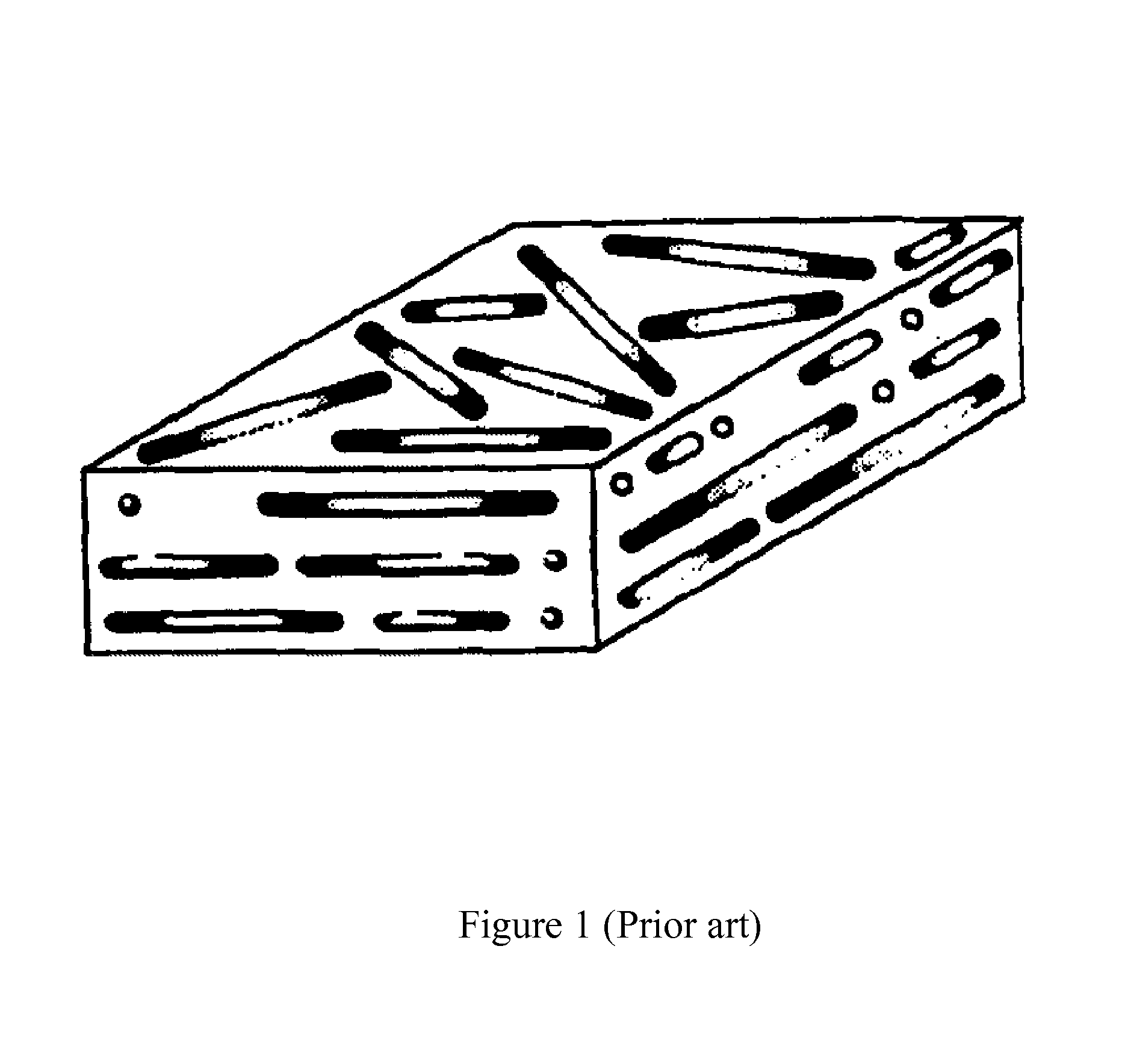Optical film
a technology film, applied in the field of optical retardation film, can solve the problems of oblique viewing angle contrast ratio drop, polarizers becoming uncrossed, low contrast ratio at wide viewing angle along the bisector of crossed polarizers
- Summary
- Abstract
- Description
- Claims
- Application Information
AI Technical Summary
Benefits of technology
Problems solved by technology
Method used
Image
Examples
example 1
[0041]The example describes synthesis of 2,2′-disulfo-4,4′-benzidine terephthalamide-isophthalamide copolymer cesium salt.
[0042]The same method of synthesis can be used for preparation of the copolymers of different molar ratio.
[0043]4.098 g (0.012 mol) of 4,4′-diaminobiphenyl-2,2′-disulfonic acid was mixed with 4.02 g (0.024 mol) of cesium hydroxide monohydrate in water (150 ml) in a 1 L beaker and stirred until the solid was completely dissolved. 3.91 g (0.012 mol) of sodium carbonate was added to the solution and stirred at room temperature until dissolved. Then toluene (25 ml) was added. Upon stirring the obtained solution at 7000 rpm, a solution of 2.41 g (0.012 mol) of terephthaloyl chloride (TPC) and 2.41 g (0.012 mol) of isophthaloyl chloride (IPC) in toluene (25 ml) were added. The resulting mixture thickened in about 3 minutes. The stirrer was stopped, 150 ml of ethanol was added, and the thickened mixture was crushed with the stirrer to form slurry suitable for filtration...
example 2
[0044]The example describes preparation of a solid optical retardation layer of negative C-type with 2,2′-disulfo-4,4′-benzidine terephthalamide-isophthalamide copolymer (terephthalamide / isophthalamide molar ratio 50:50) prepared as described in Example 1.
[0045]2 g of poly(2,2′-disulfo-4,4′-benzidine terephthalamide-isophthalamide copolymer) cesium salt was dissolved in 100 g of de-ionized water (conductivity ˜5 μSm / cm). The suspension was mixed with a magnet stirrer. After dissolving, the solution was filtered with the hydrophilic filter with a 45 μm pore size and evaporated to the viscous isotropic solution of the concentration of solids of about 6%.
[0046]Fisher brand microscope glass slides were prepared for coating by soaking in a 10% NaOH solution for 30 min, rinsing with deionized water, and drying in airflow with the compressor. At temperature of 22° C. and relative humidity of 55% the obtained LLC solution was applied onto the glass panel surface with a Gardner® wired stainl...
example 3
[0047]The example describes preparation of a solid optical retardation layer of Ac-plate type with 2,2′-disulfo-4,4′-benzidine terephthalamide-isophthalamide copolymer (terephthalamide / isophthalamide molar ratio 92:8) prepared as described in Example 1.
[0048]2 g of poly(2,2′-disulfo-4,4′-benzidine terephthalamide-isophthalamide copolymer) cesium salt produced as described in Example 1 was dissolved in 100 g of de-ionized water (conductivity ˜5 μSm / cm), and the obtained suspension was mixed with a magnet stirrer. After dissolving, the solution was filtered with the hydrophilic filter of a 45 μm pore size and evaporated to form viscous birefringent solution of concentration of solids of approximately 6%.
[0049]The coatings were produced and optically characterized as described in Example 2 with the Mayer rod #8 used for coating. The refractive index spectral dependencies are presented in FIG. 3. The obtained solid optical retardation layer was characterized by thickness of approximatel...
PUM
| Property | Measurement | Unit |
|---|---|---|
| thickness retardation Rth | aaaaa | aaaaa |
| size | aaaaa | aaaaa |
| angle | aaaaa | aaaaa |
Abstract
Description
Claims
Application Information
 Login to View More
Login to View More - R&D
- Intellectual Property
- Life Sciences
- Materials
- Tech Scout
- Unparalleled Data Quality
- Higher Quality Content
- 60% Fewer Hallucinations
Browse by: Latest US Patents, China's latest patents, Technical Efficacy Thesaurus, Application Domain, Technology Topic, Popular Technical Reports.
© 2025 PatSnap. All rights reserved.Legal|Privacy policy|Modern Slavery Act Transparency Statement|Sitemap|About US| Contact US: help@patsnap.com



